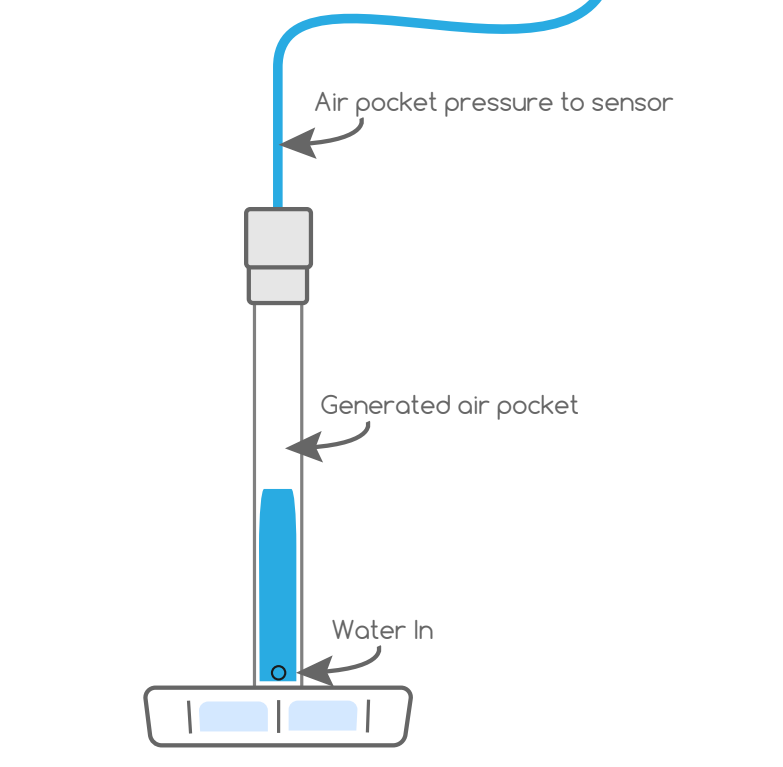Managing cistern water in Airbnb rentals with a PTLevel
Managing Airbnb properties comes with its own set of challenges, especially when it comes to utilities like water supply. For properties relying on cisterns, wells, or water tanks, monitoring water levels is critical to ensure a seamless guest experience. The PTLevel is revolutionizing managing cistern water in Airbnbs, providing property managers with an efficient and reliable solution.
PTLevel: A Game Changer for Airbnb Rentals
The PTLevel allows property managers to remotely monitor water levels in tanks, cisterns, and wells. This cloud-connected device provides real-time updates, helping managers prevent inconvenient situations like running out of water during a guest’s stay, which is essential for managing cistern water in Airbnbs.

PTLevel Portal
Check your water level remotely from your phone or tablet.
Get reports as frequently as every 2 minutes with the Wired WiFi PTLevel or as frequently as every 4 minutes with the Long Range Wireless.
Set 2 alert points for high or low liquid level notifications via email and SMS.
Why Airbnb Property Managers Love the PTLevel for managing cistern water
Check water levels from your smartphone, tablet, or computer—no need to be on-site.
As long as you have a WiFi signal within 1 km, you can remote monitor any of your liquid levels including cisterns, chemical tanks, and more.
Track historical usage data to identify trends and optimize water delivery schedules.
With the free account, view up to 1 month of running history. Upgrade to the Premium Account to view and download up to 2 years of level history.
Avoid emergency water deliveries by ordering only when needed.
The PTLevel, with its accurate monitoring, alert system, and data-sharing capabilities, can help you avoid unnecessary water deliveries and optimize your water usage. This is particularly useful when managing cistern water in Airbnbs.
Try out our free cistern-savings calculator.
Provide your guests with uninterrupted water supply, boosting your Airbnb ratings.

Perfect for High-Traffic Properties
Vacation rentals like those in the Red River Gorge often see back-to-back bookings, leaving little time for maintenance between guests. The PTLevel simplifies the process by giving property managers instant insights into water usage. Knowing exactly when a tank needs to be refilled allows for better scheduling and fewer last-minute emergencies, which is crucial for managing cistern water in Airbnbs.
Elevate Your Property Management Game
Whether you’re managing a single Airbnb or a portfolio of properties, the PTLevel can make your job easier. Its reliable monitoring capabilities mean you spend less time worrying about water and more time focusing on creating exceptional guest experiences.
Rock Point, Red River Gorge Getaways – A Case Study
This is not a sponsored post!
One satisfied user is Rock Point Cabin, Red River Gorge Getaways, offering amazing vacation rentals in Kentucky’s scenic Red River Gorge. Gary shared his experience:
“Its been a lifesaver to help plan tank fills. Rock Point gets rented a lot.”
This brand-new modern cabin boasts one of the BEST rock line views in the Gorge! Rock Point cabin sits high atop the cliff at Shawnee Run in Rogers, KY and offers soaring pine wrapped high ceilings, cedar beams, and an open spacious floor plan. Come watch the sunrise on the back deck while sipping on your favorite coffee and enjoying the tranquility of nature or wind down the day relaxing in the hot tub taking in the rock line views.
You won’t run out of water!
By using a PTLevel to monitor the cabin’s water levels, you know you’re being well taken care of at the Rock Point Cabin!
Breathtaking views
Since Long Range Wireless PTLevels have a range of up to 1km, enjoy the breathtaking views and not worry about device range.
Weather-ready
From snow and ice to the heat of summer, monitor your tanks year-round with the PTLevel. Rated for -40°C to 100°C temperature range.


PTDevices Property Management Portal Features
One of the key factors allowing our property management companies to stay ahead of their competitors is the implementation of the PTLevel Client Management Portal.
This advanced application allows property managers to know what’s going on at clients locations when it comes to water, septics, chemical tanks, soaps and detergents, food oils, etc. Learn more about the applications of the PTLevel in businesses.
Utilize features such as Client Notes, Device Management Alerts, Client List, Client Map, White Labelling, Reselling, and more!

































































